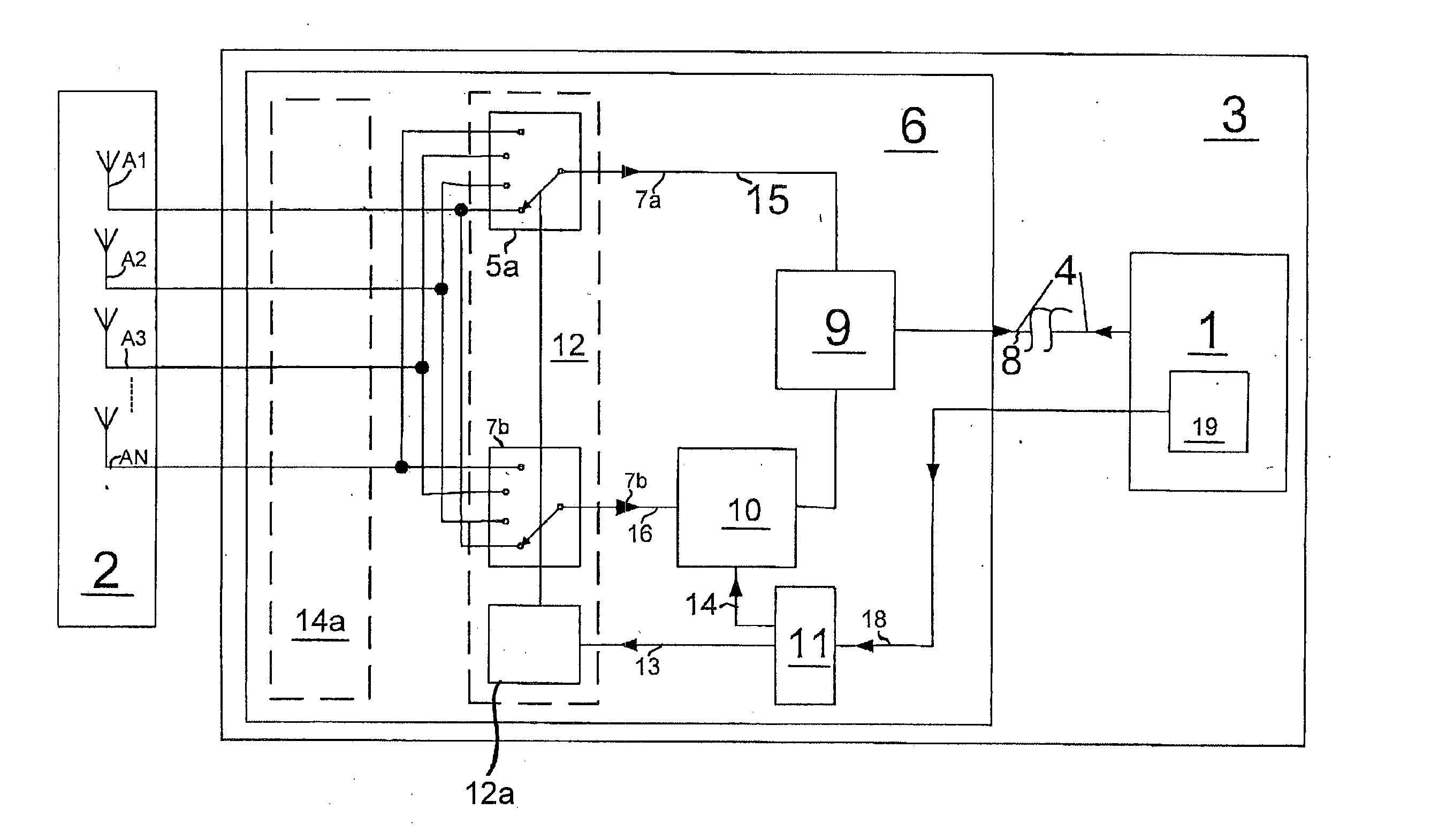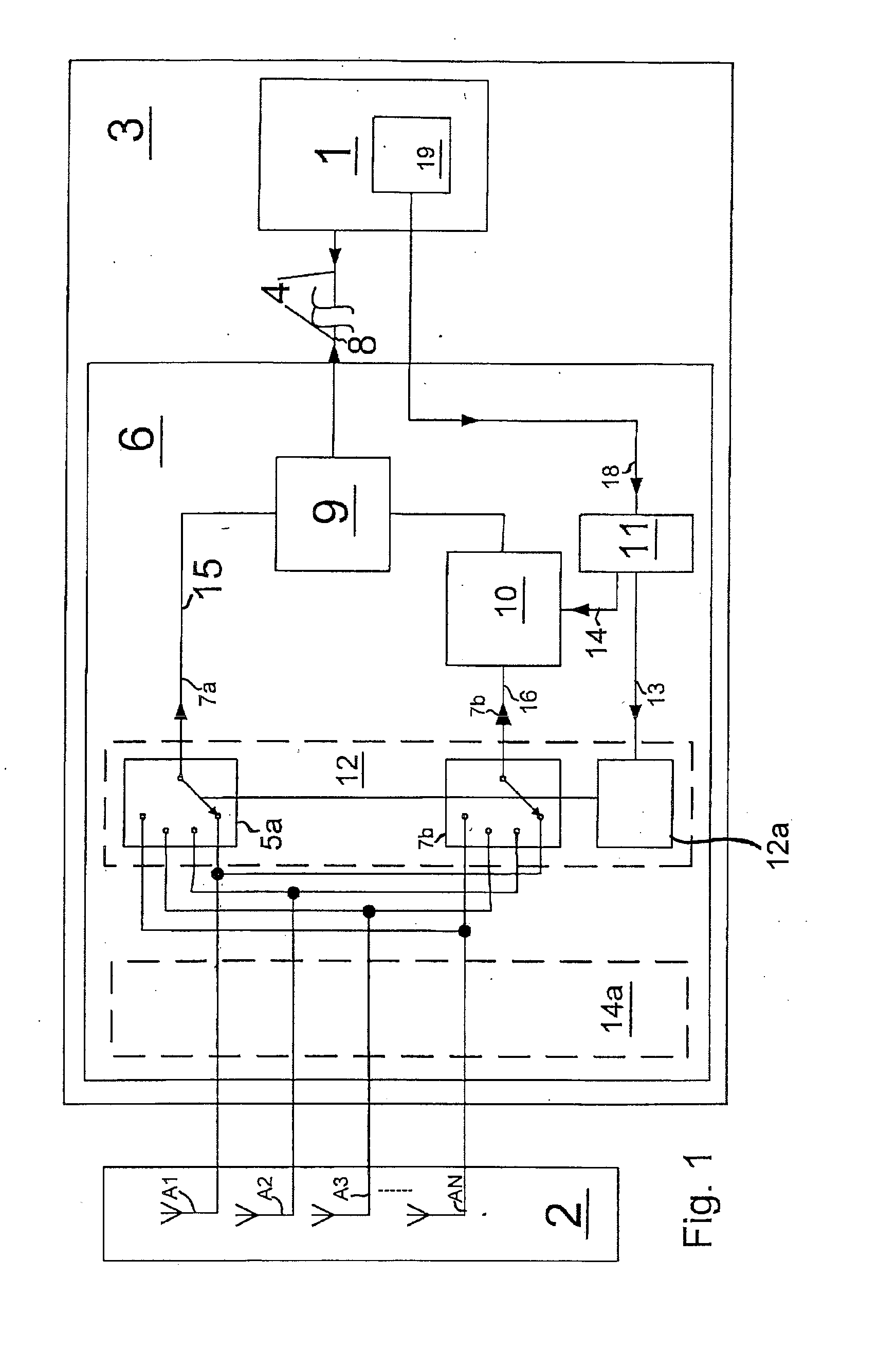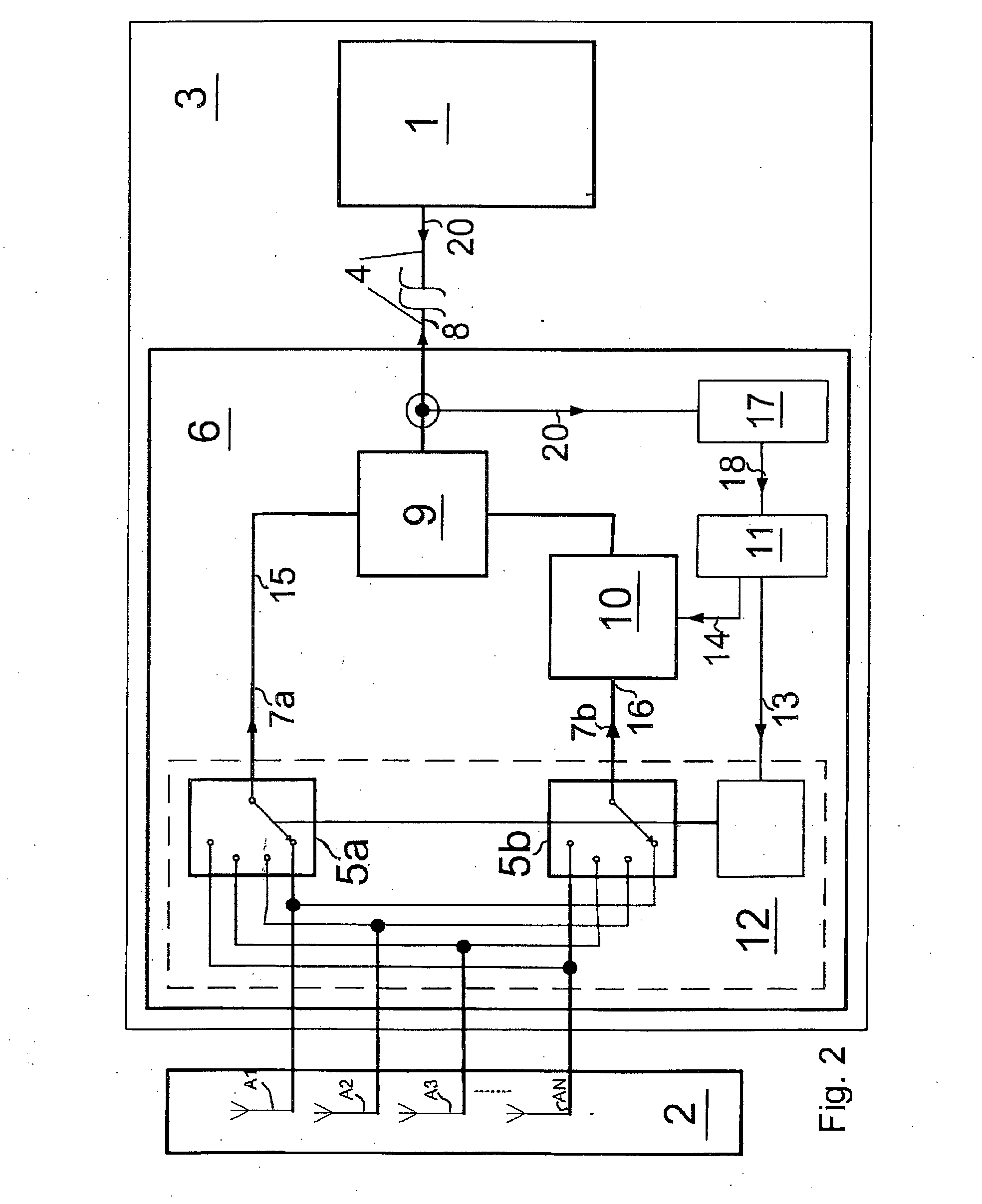Antenna diversity system for radio reception for motor vehicles
a technology for radio reception and diversity, applied in diversity/multi-antenna systems, instruments, polarisation/directional diversity, etc., can solve the problems of interference, inability to achieve sufficient diversity effects, and limited function of same-phase summation of antenna signals, etc., to achieve economical antenna diversity, good signal/noise ratio, and good effect of signal quality
- Summary
- Abstract
- Description
- Claims
- Application Information
AI Technical Summary
Benefits of technology
Problems solved by technology
Method used
Image
Examples
Embodiment Construction
[0043] Referring in detail to the drawings, FIG. 1 shows a schematic block diagram of an antenna diversity system comprising a group of antennas or multi antenna system 2 which include a plurality of antennas Al, A2, A3, AN . . . This multi antenna system 2 is in communication with a diversity reception device 3 via a series of input side signal path lines 14a. Diversity reception device 3 includes a receiver 1, and an antenna diversity module 6 which includes an addressable signal selection switch 12 having a plurality of selection switches 5a and 5b which are controlled by a switch controller 12a.
[0044] Inside of diversity reception device 3, there is a branching of the input signal path 14a into a first separate output signal path 15 having a reception signal 7a, and a second separate output signal path 16 having a reception signal 7b. With this design, there is an adjustable phase rotation device 10 disposed along signal path 16. There is also a summation circuit 9 coupled to b...
PUM
 Login to View More
Login to View More Abstract
Description
Claims
Application Information
 Login to View More
Login to View More - R&D
- Intellectual Property
- Life Sciences
- Materials
- Tech Scout
- Unparalleled Data Quality
- Higher Quality Content
- 60% Fewer Hallucinations
Browse by: Latest US Patents, China's latest patents, Technical Efficacy Thesaurus, Application Domain, Technology Topic, Popular Technical Reports.
© 2025 PatSnap. All rights reserved.Legal|Privacy policy|Modern Slavery Act Transparency Statement|Sitemap|About US| Contact US: help@patsnap.com



